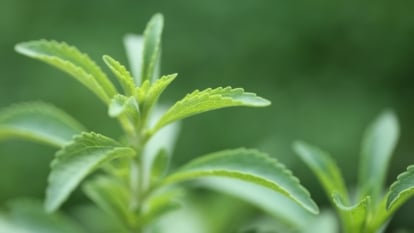When you’re looking for pomegranates to plant in your garden, ‘Wonderful’ is bound to pop up a few times. This popular variety is one of the most widely grown in home gardens, with a high yield and wonderfully sweet fruits.
But the fruits aren’t the only benefit. Pomegranate trees are also great ornamental plants, ideal for growing in the ground or in containers. And their resilience and adaptability means even beginners won’t have trouble growing these trees.
Follow these steps to plant and care for the popular ‘Wonderful’ pomegranate in your garden.
‘Wonderful’ Pomegranate
‘Wonderful’ Pomegranate trees:
- produce abundant juicy fruit
- feature lush green leaves and deep orange flowers in spring
- require little maintenance
- grow in zones 8-11
- thrive in pots for overwintering in colder zones
‘Wonderful’ Pomegranate Plant Overview
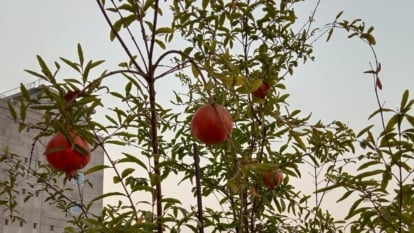
|
|
What Is It?
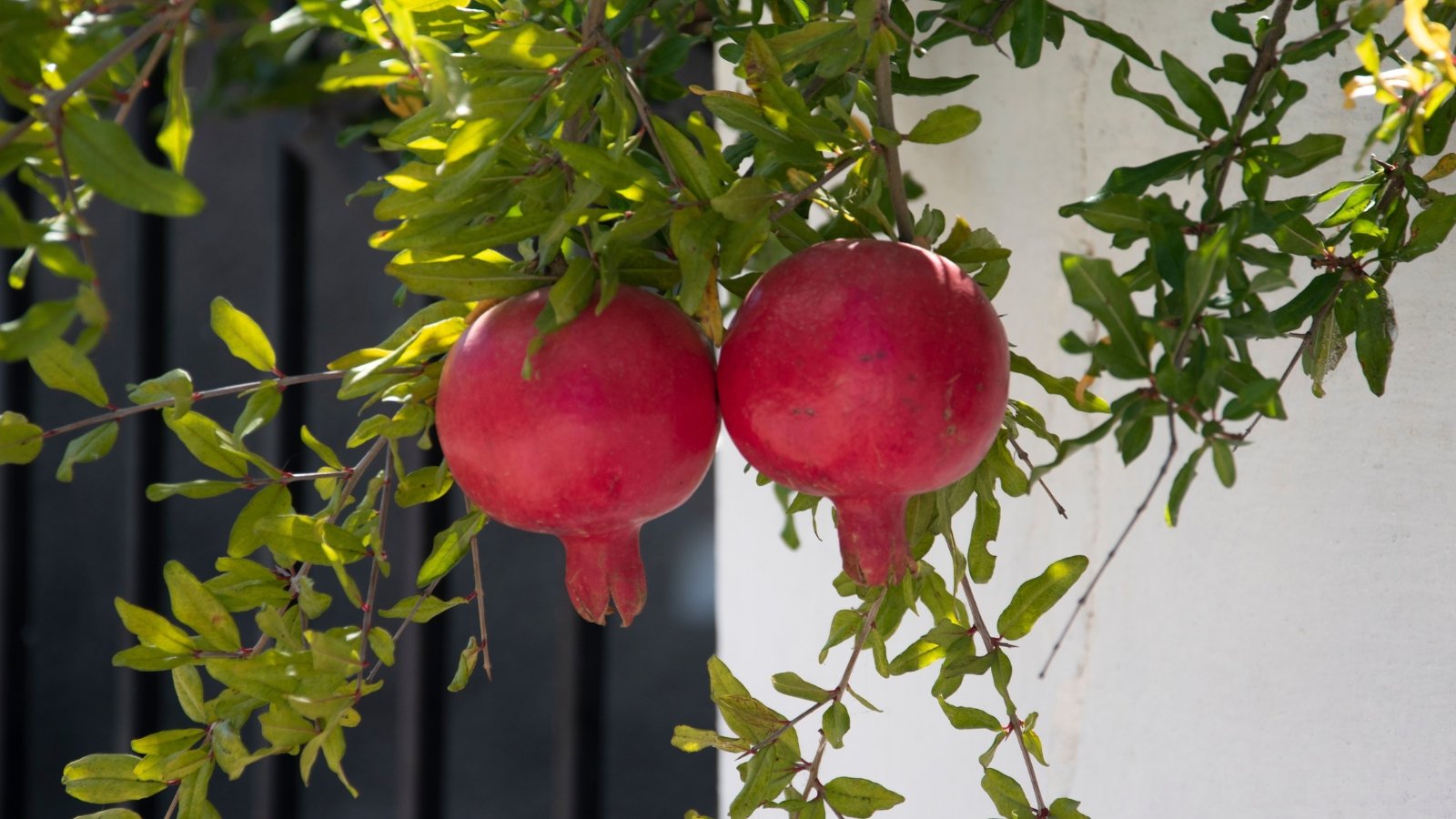
‘Wonderful’ is one of the most widely grown pomegranates for home gardens, and it’s easy to see why. These trees are tough and resilient, adapting to harsh environments where other fruit trees may struggle. ‘Wonderful’ is a prolific producer of large fruits, but also comes with tons of ornamental value – truly the full package.
‘Wonderful’, like other pomegranates, is usually grown as a shrub, perfect for borders, hedging, or espalier. However, its versatility means it can be shaped into a small tree, generally reaching heights of 6 to 20 feet. Its interesting bark, glossy leaves, and structural shape mean it will stand out, no matter where it’s planted.
This variety thrives in warm climates and demonstrates drought tolerance once established. It’s not ideal for gardeners in cooler regions (USDA Zones 6 or below) but will thrive in hot summers and sandy soil.
Whether you’re growing them for their health benefits or year-round visual interest, the ‘Wonderful’ pomegranate will not disappoint.
Planting
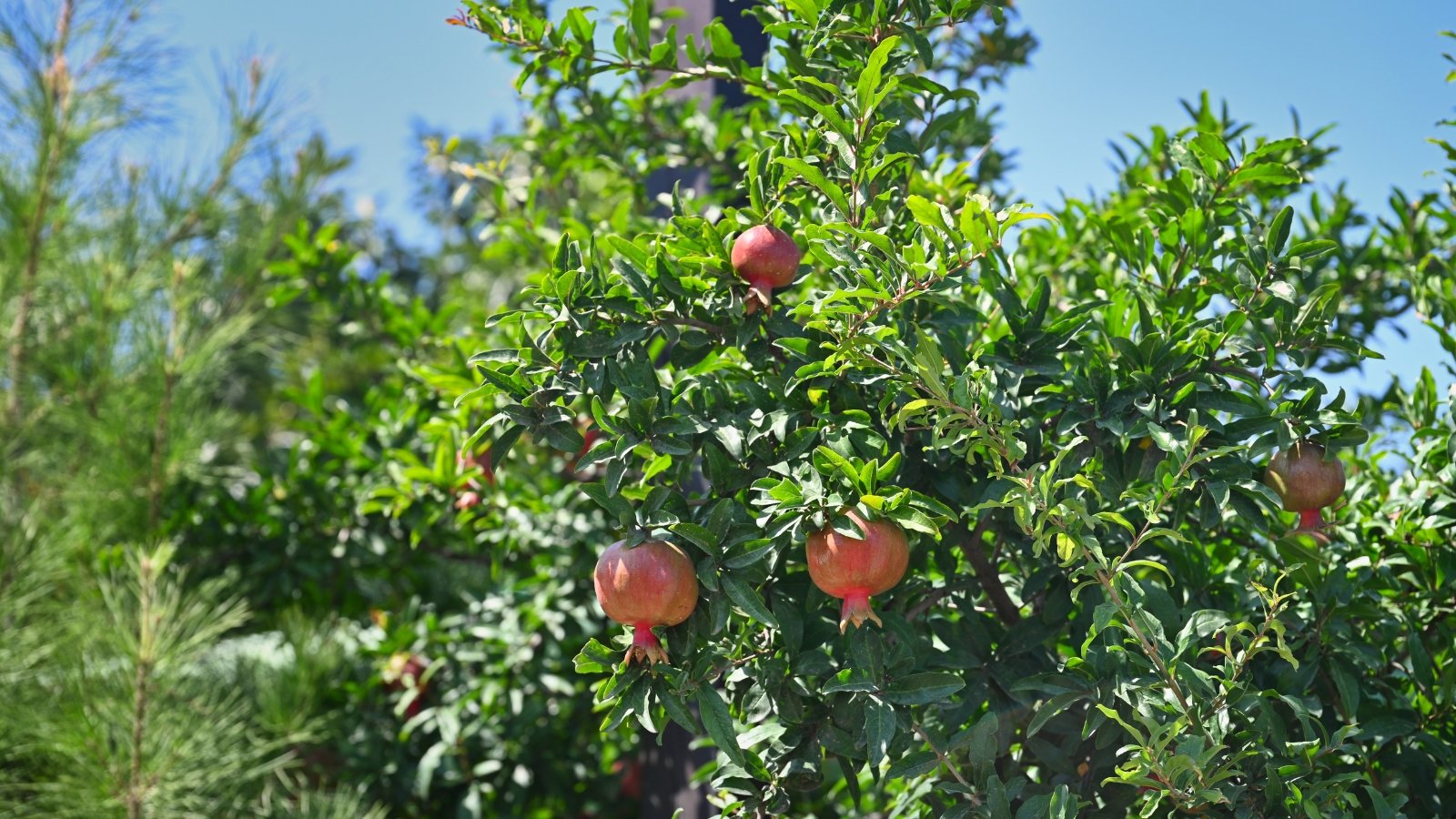
Once you’ve purchased a ‘Wonderful’ pomegranate tree, it’s time to get planting. Choosing the right location is key to a successful harvest, so it’s vital to plant in a prime spot that matches their native habitats as closely as possible. This variety, while hardy, will produce more prolifically when given the proper foundation.
Choose a sunny spot that receives at least six hours of direct sunlight daily, preferably more. If the summer sun is quite intense, pick a location that provides some light afternoon shade to avoid scalding that can impact production. The site should also be well-draining in any area where water does not pool after rain, as this can lead to rot.
Spring is the best time for planting, allowing the pomegranate to establish its roots before the heat of summer kicks in. Ensure the threat of frost has passed in cooler zones before getting your tree in the ground. You may want to allow it to acclimate to your garden environment for a couple of days before planting to prevent shock.
When you’re ready to plant, prepare a hole a little wider than the container the tree came in. Gently remove it from its container and lightly tease the roots if they are circling around each other. Place the tree in the hole, ensuring it sits at the same depth it did in its container. Fill the hole with the soil, firming it around the base of the tree to eliminate air pockets.
After planting, water the tree deeply to settle the soil around the roots and avoid transplant shock. Apply a layer of organic mulch around the base of the tree, keeping the mulch a few inches away from the trunk to prevent moisture retention, which can lead to fungal disease.
Planting in Containers
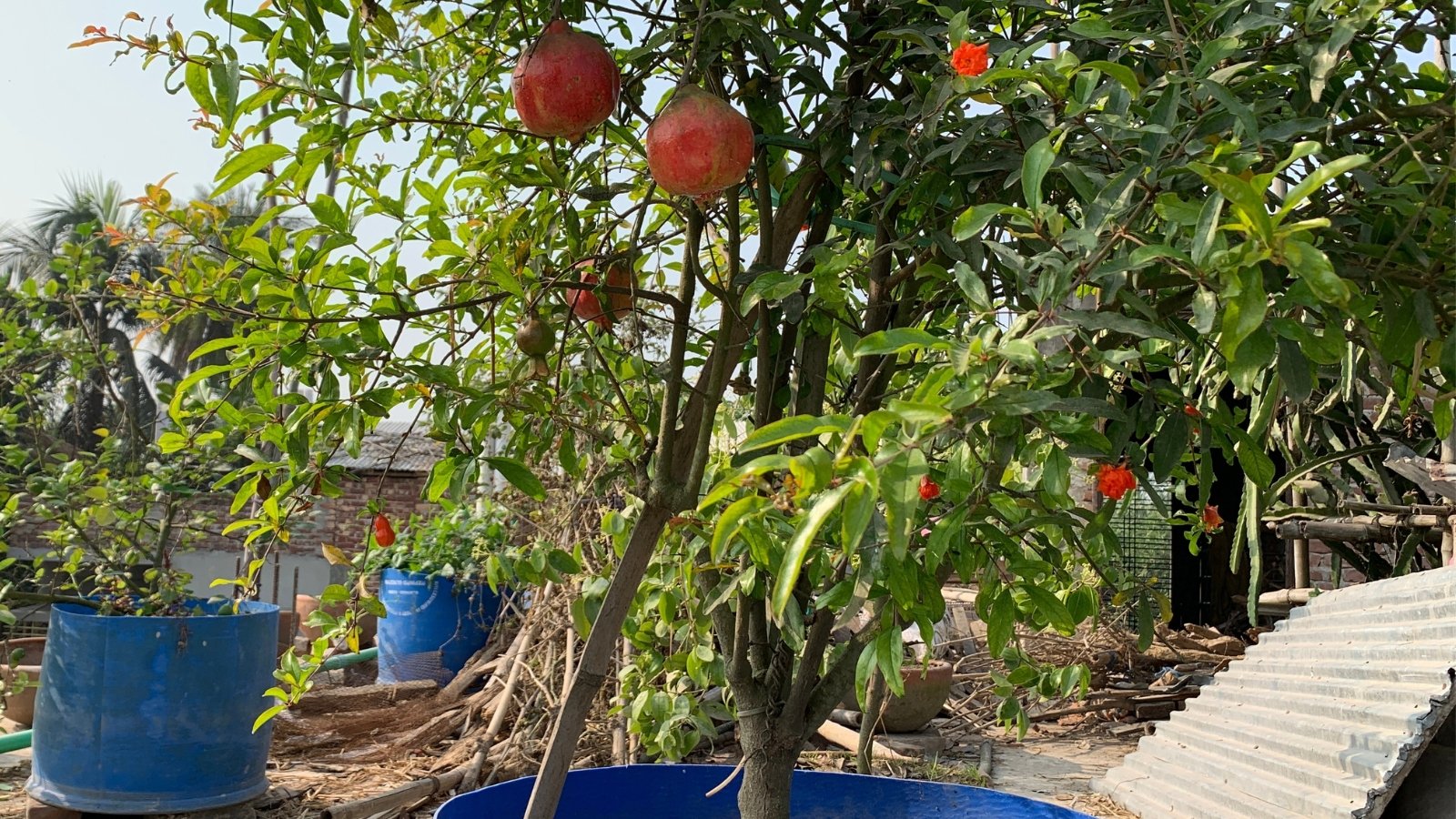
For those who don’t have the space to plant in the ground, live in colder climates, or want to keep the pomegranate tree compact, try growing in containers. The plants won’t grow as large as they would when left to spread, but you can still harvest plenty of fruits and save space at the same time.
Select a pot large enough to accommodate the tree’s root system (start with one a few inches wider and deeper than the container or bag the tree is currently in). The pot should also have drainage holes at the bottom to allow excess moisture to leave the pot.
Use a high-quality potting mix, preferably one formulated for fruit trees. As when choosing a container, drainage should be a primary consideration. If the mix is a little too dense, add some extra perlite or sand to recreate the soil conditions the trees are accustomed to. Test the drainage of the mix before you plant—you don’t want to have to repot any time soon.
Remove the pomegranate tree from its current home, gently loosening any tightly bound roots at the base to encourage them to grow outwards. Place it in the container, ensuring it sits at the same level it did in its original container. Fill the gaps around the tree with potting mix, gently firming down to eliminate air pockets.
After planting, water thoroughly and deeply. Place the container in a location in a sunny spot, like a south-facing patio or balcony. Check the soil’s moisture level often, watering when the top few inches feel dry.
How To Grow
Pomegranates are easygoing trees. Follow these care guidelines to keep them happy and productive season after season.
Light
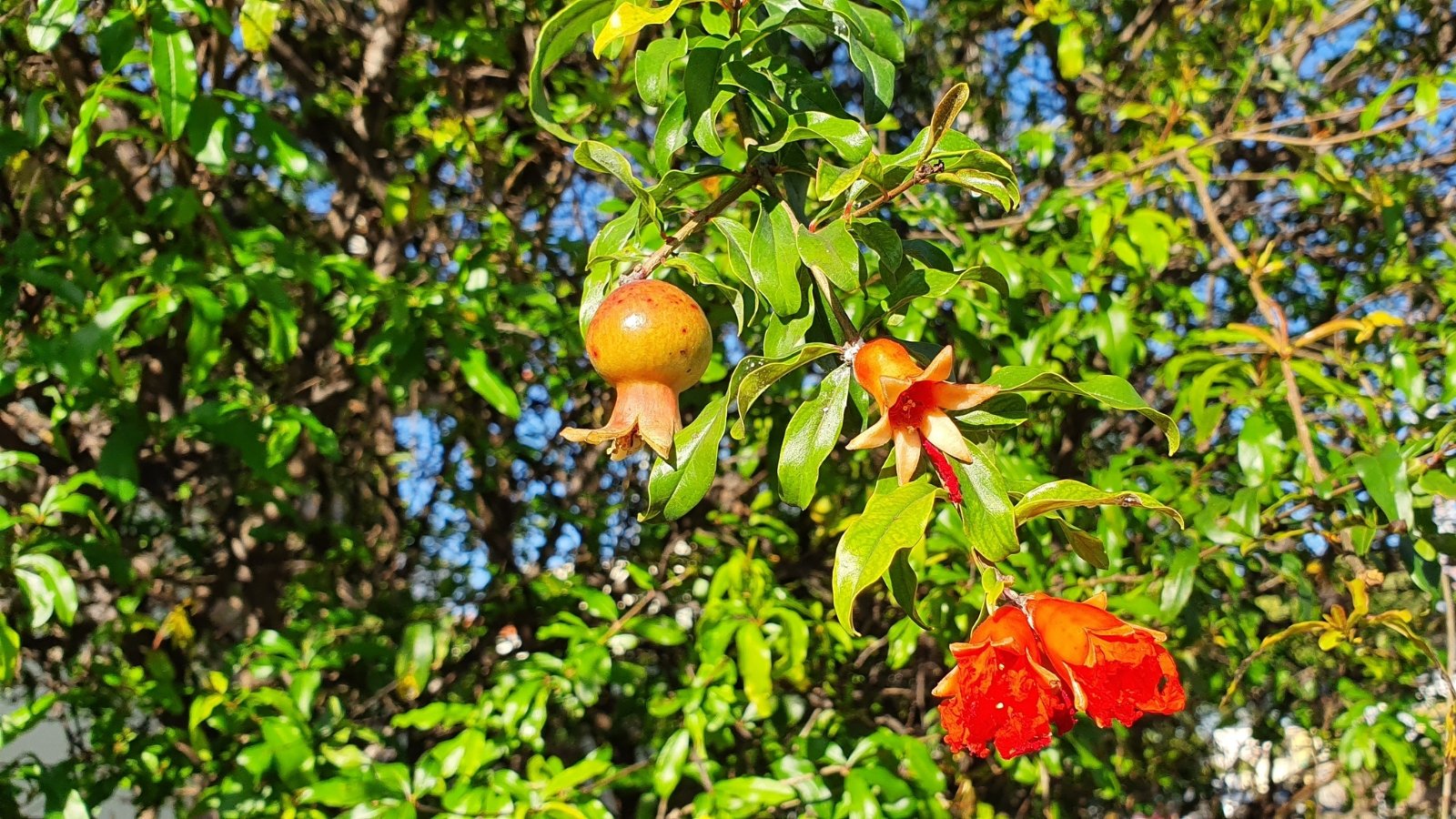
‘Wonderful’ pomegranates need full sun for the strongest growth and fruiting. This translates to at least 6 hours of sunlight per day, preferably more.
Adequate sunlight is crucial for all processes, but particularly flowering and fruiting—one of the highlights of growing these trees. If you’re happy with foliage alone, a little less sunlight will be fine. Leggy growth, sparse foliage, or a lack of flowers are all signs your pomegranate is not getting enough sun.
If your tree is container-grown, you can adjust the position of the tree throughout the seasons to maximize sunlight exposure. Where light is largely coming from one direction for most of the day, it’s best to rotate your pot occasionally to stop growth from becoming lopsided.
Water
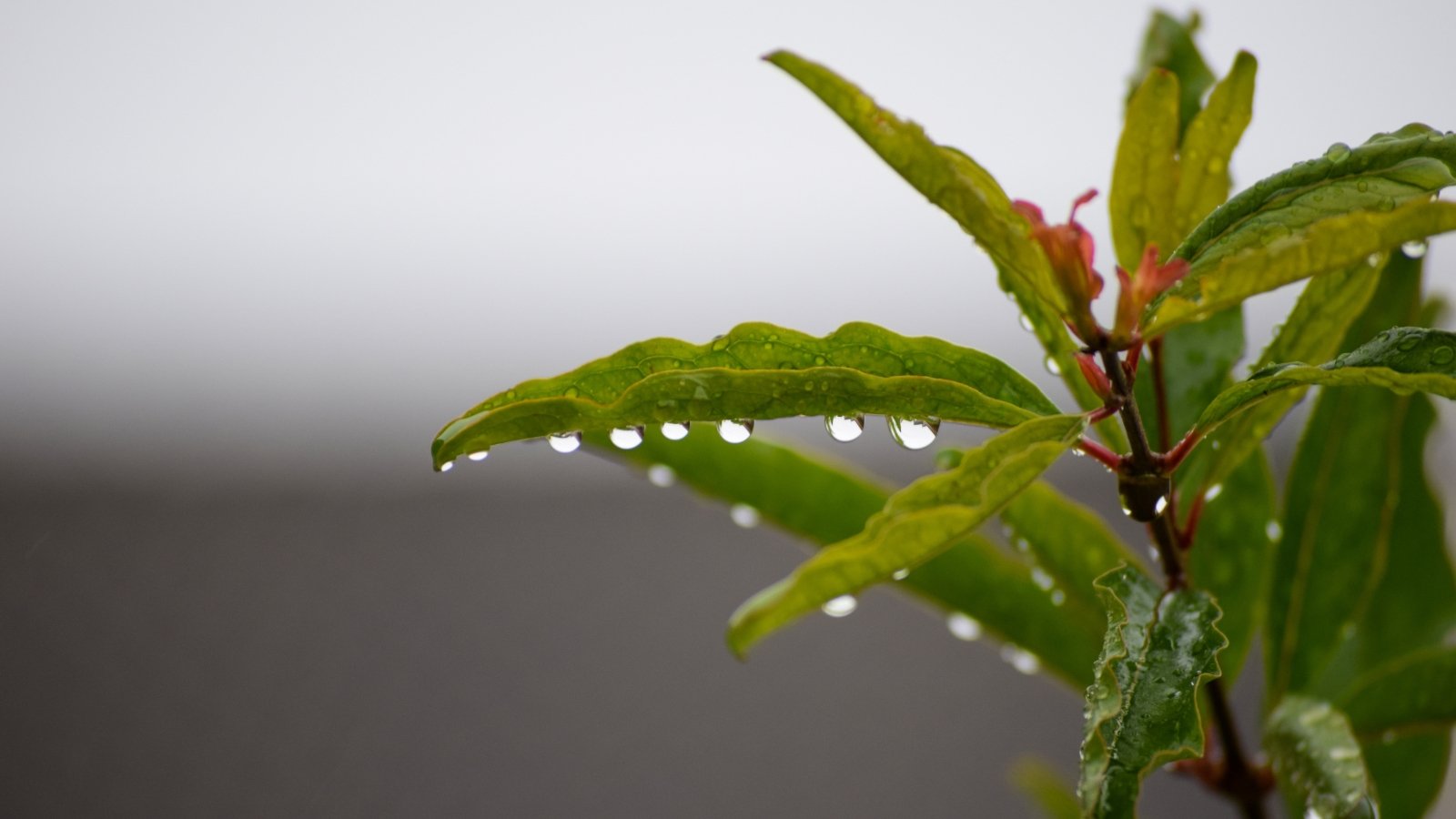
While established ‘Wonderful’ pomegranates are known for their drought tolerance, consistent watering during the first few years and fruiting time is essential.
Inconsistent watering after planting the tree will lead to a shallow root system that impacts later drought tolerance, while lack of moisture (or too much moisture) during fruiting can cause the fruits to crack.
Water deeply and regularly in the first few months after planting, allowing the soil to dry out a little before watering again. Adjust your watering frequency based on environmental conditions like rainfall, temperature, and soil moisture content, reducing watering in cooler months to prevent waterlogging.
Monitor soil moisture levels closely, particularly when growing in containers, rather than watering on a strict schedule,
Soil
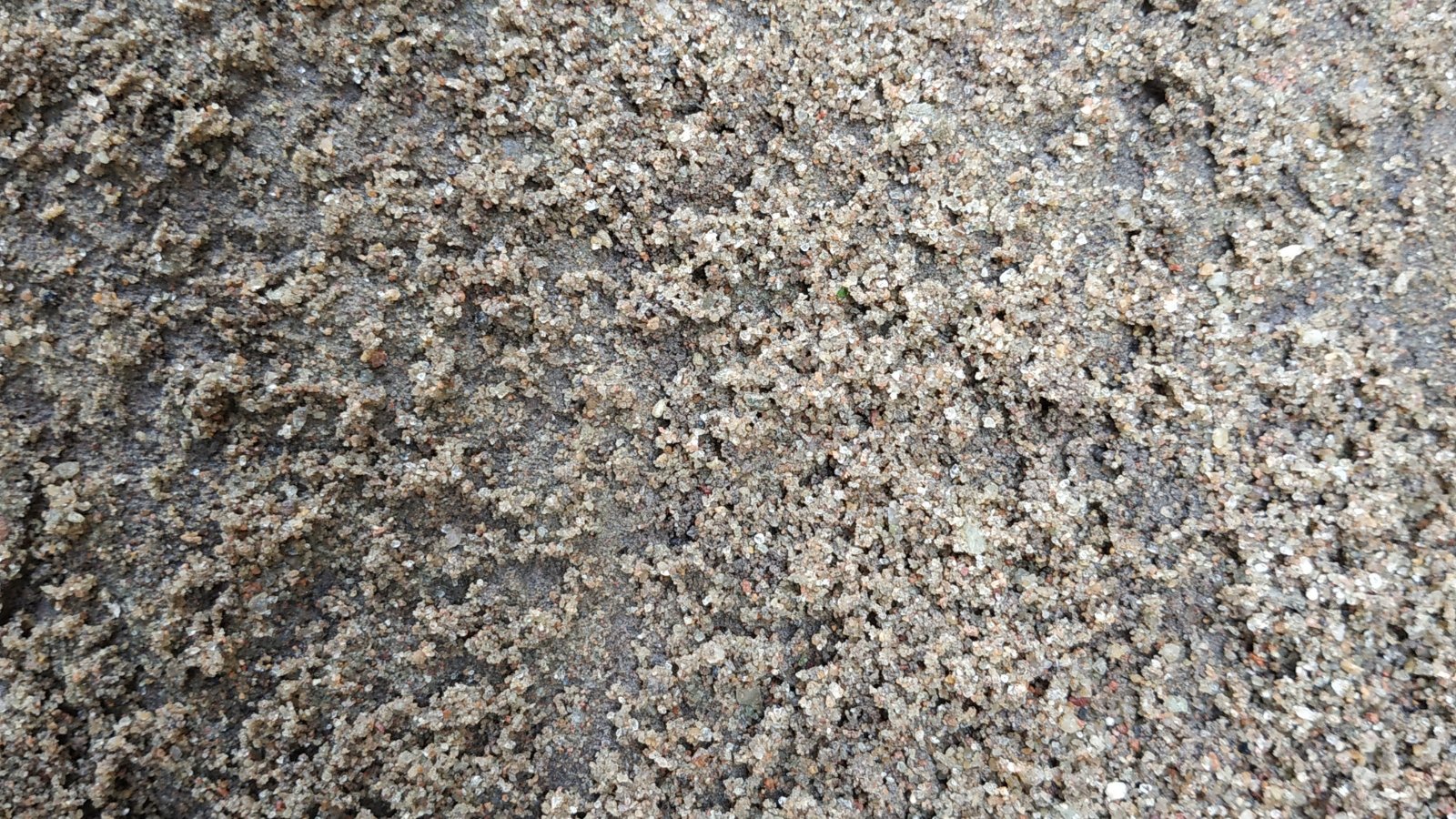
While they aren’t too fussy about soil, ‘Wonderful’ pomegranates aren’t happy with soggy roots. The soil needs to drain well and quickly, with a slightly sandy texture. If your soil is not ideal, mix in some compost before planting to improve conditions.
They can adapt to different soil types, but I would avoid heavy clay unless you’re willing to heavily amend the soil before planting. Alternatively, plant in containers where you can completely control the soil conditions.
Temperature & Humidity
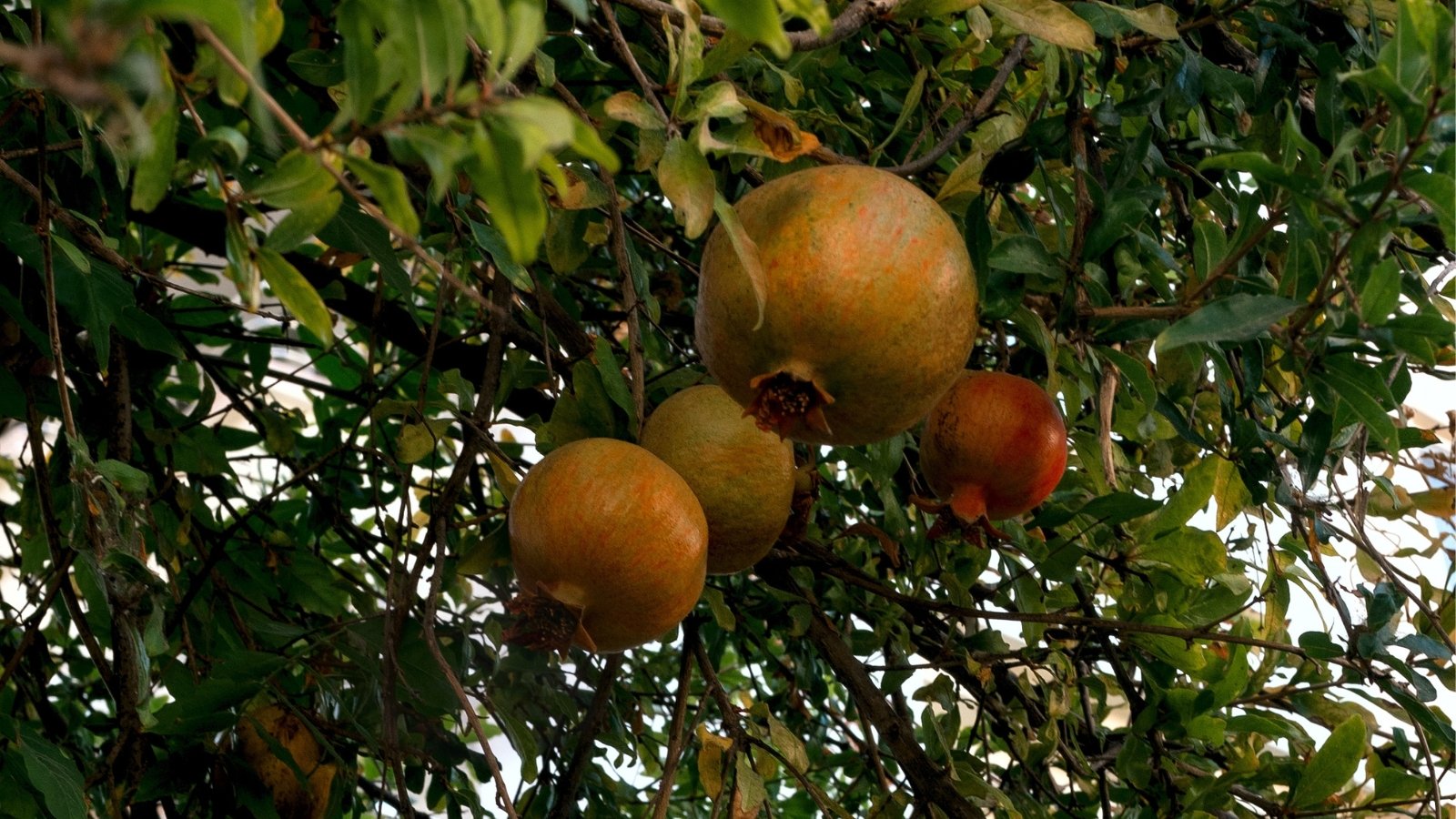
Pomegranates are native to warm and dry climates. Matching these conditions will ensure you get the most out of your tree. This variety grows best in USDA Zones 8-11, but you can grow them in cooler climates if you plant in containers and move the pot to a protected area when temperatures drop below 10°F (-12°C). You’ll also need a winter that doesn’t drop below 40°F (4°C) for an extended period to form fruit properly.
While drier conditions are preferred, ‘Wonderful’ pomegranates can adapt to different humidity levels. However, in regions with high humidity, issues with fungal disease are more likely. Ensure good air circulation around the tree and prune annually to limit risk.
Fertilizing
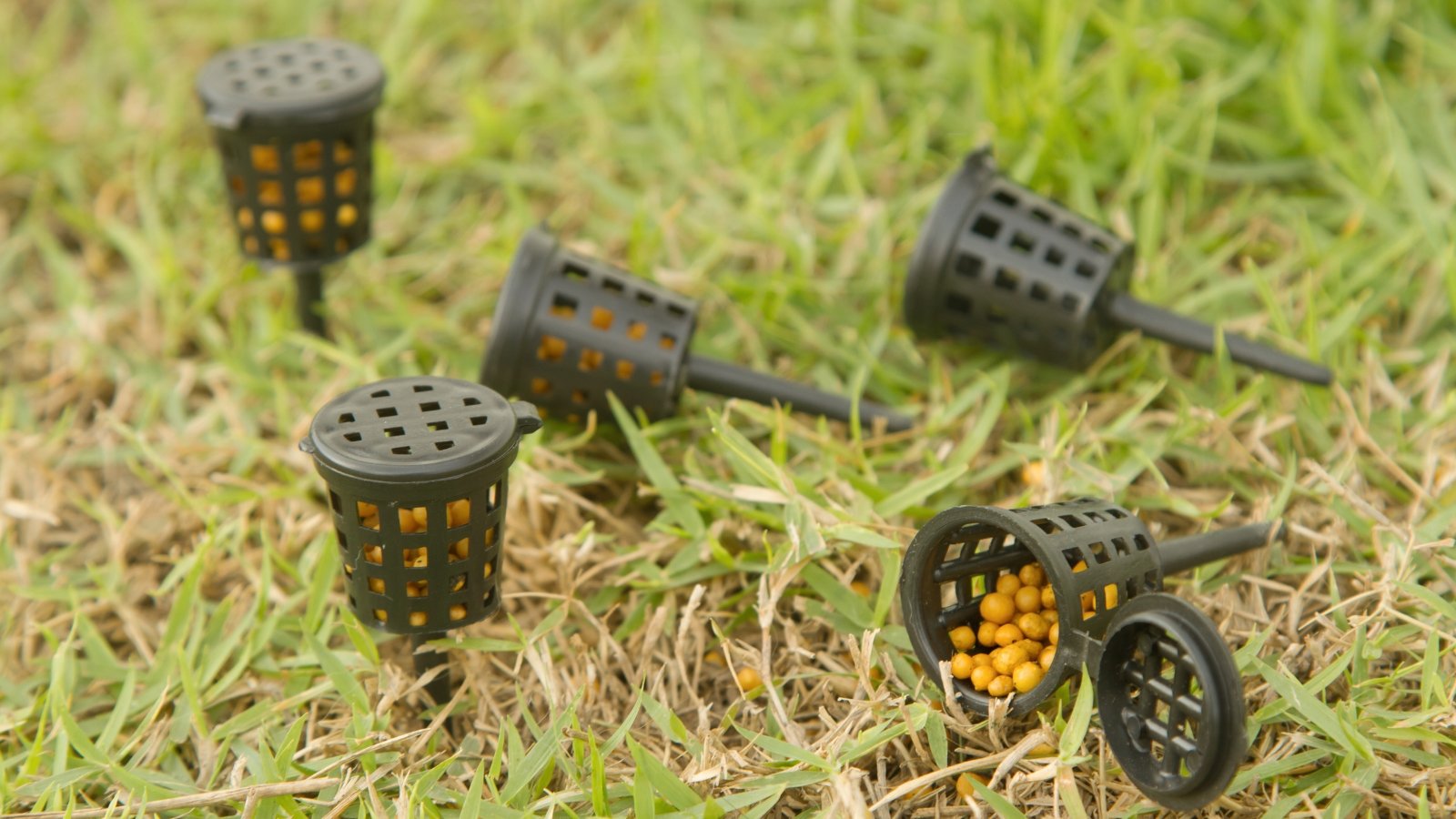
After the first one or two seasons, you can start feeding your pomegranate tree to replenish nutrients in the soil. Fertilize in early spring, applying a balanced, slow-release fertilizer to support overall development and fruit production.
Pomegranates are not considered heavy feeders. Don’t overfertilize, as excessive nutrients (especially in spring) can lead to excess leaf growth and limited flowers or fruits. Follow the fertilizer package’s recommended rates for the size and age of your tree, never applying more than required.
Due to soil leaching, container-grown trees may require more frequent feeding, albeit at lower concentrations. Stop feeding in winter when the tree is dormant.
Maintenance
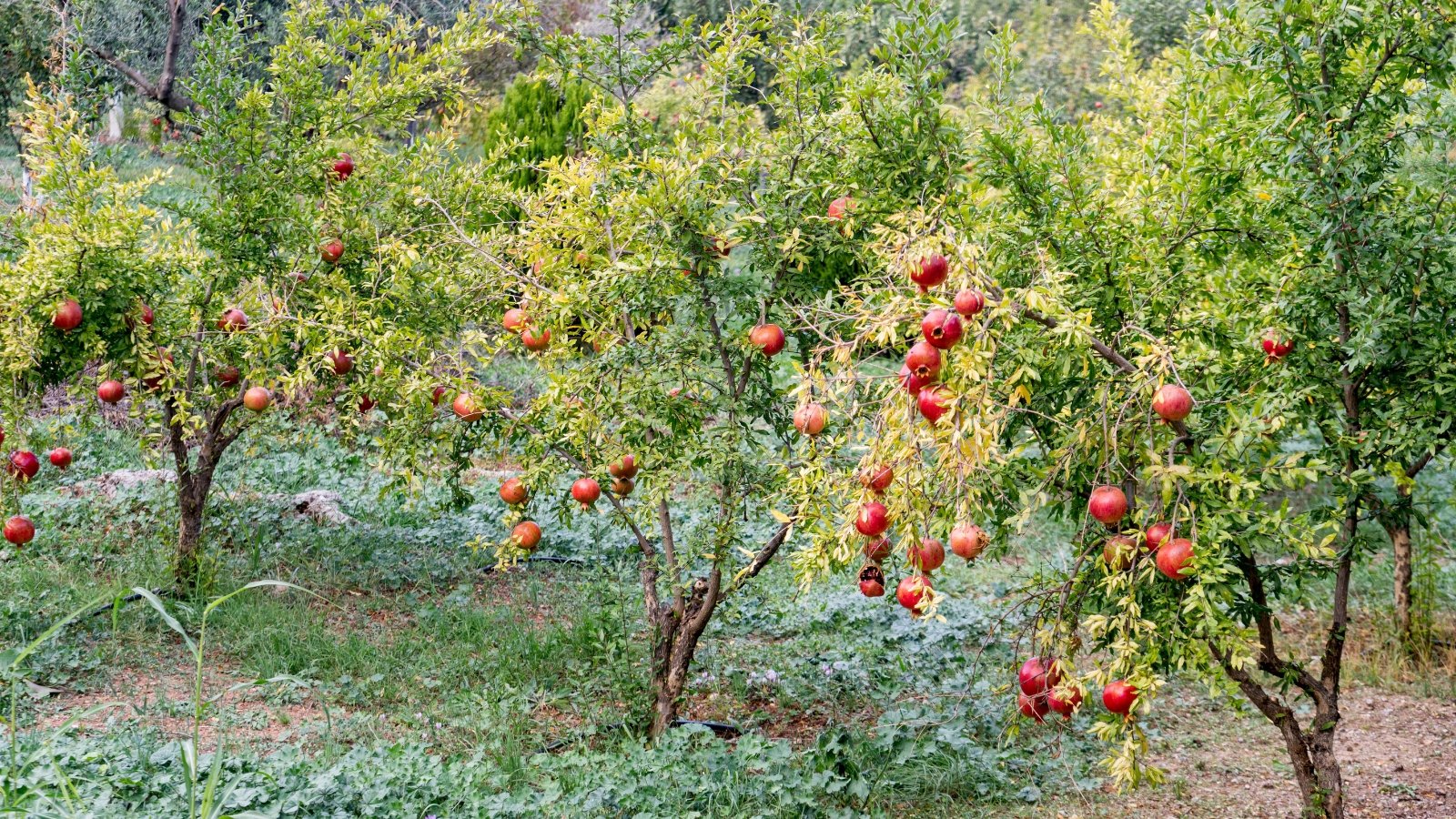
Pruning is a great tool for maintaining shape, controlling disease, and promoting air circulation between the branches. It can also help boost new growth in trees that have become leggy or damaged.
These trees don’t need much trimming—pruning once a year in later winter is ideal. Thin out dense branches and shape the tree, either keeping it shrubby or removing lower branches to create a tree shape.
Regular maintenance also includes monitoring for pests and diseases, although pomegranates are not majorly prone to issues in either case.
Harvesting
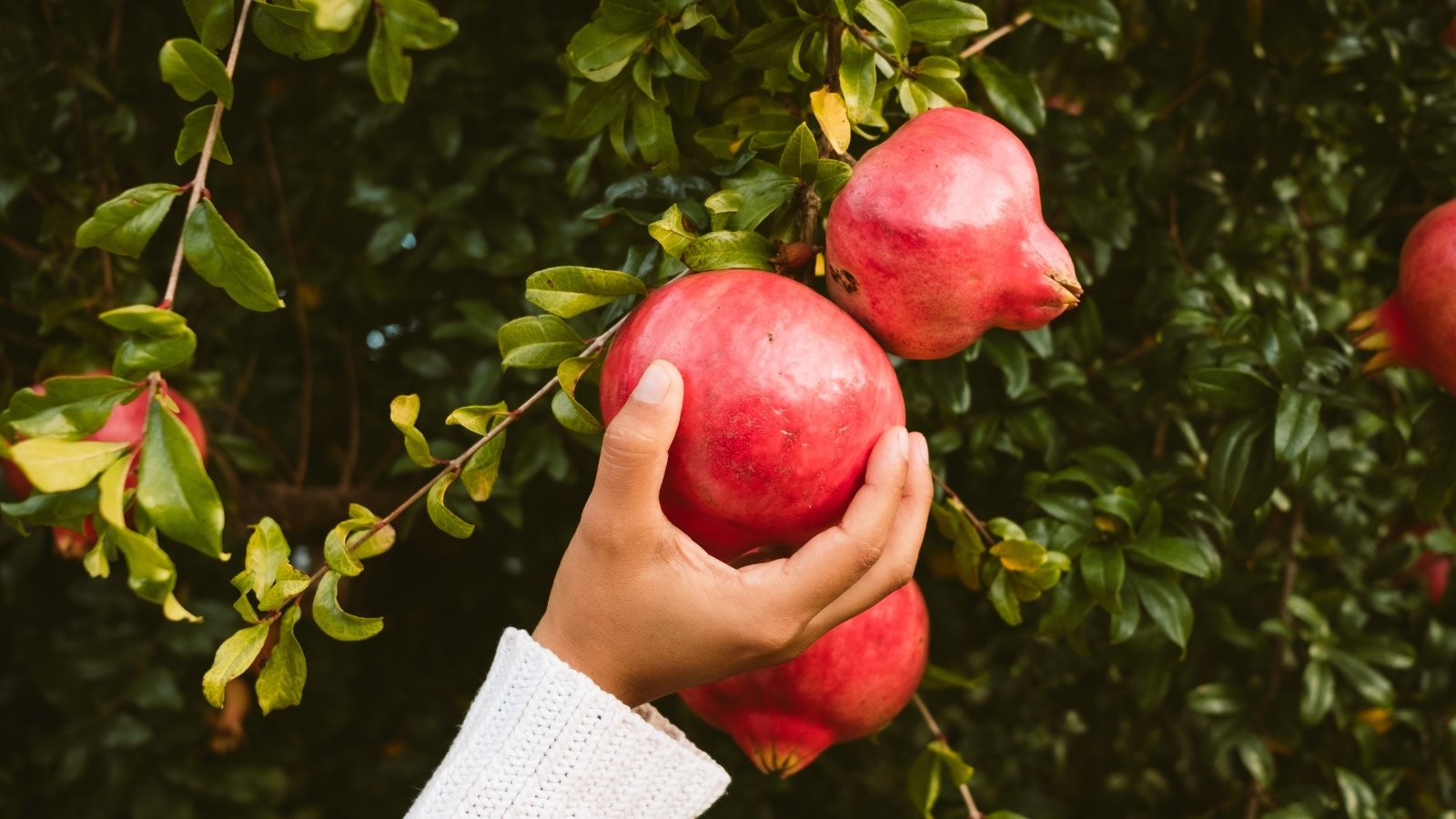
‘Wonderful’ pomegranates are typically ready for harvest in early fall, with the exact time depending on your local climate and environmental conditions.
The fruits are ready when they have developed a rich red color and the skin has a slight hardness. It should feel heavy for its size, and produce a slightly metallic sound when tapped.
To harvest, cut the fruit from the tree, leaving a few inches of stem attached. Avoid pulling or twisting the fruit off, as this can cause tears at the stem end and damaged fruits. Use sharp, disinfected pruning shears to make clean cuts and avoid introducing disease.
Once harvested, pomegranates can be stored at room temperature for a short period or placed in the refrigerator, where they can last for a few months. Keep them in a dry area, as too much moisture can lead to mold growth.
Propagation
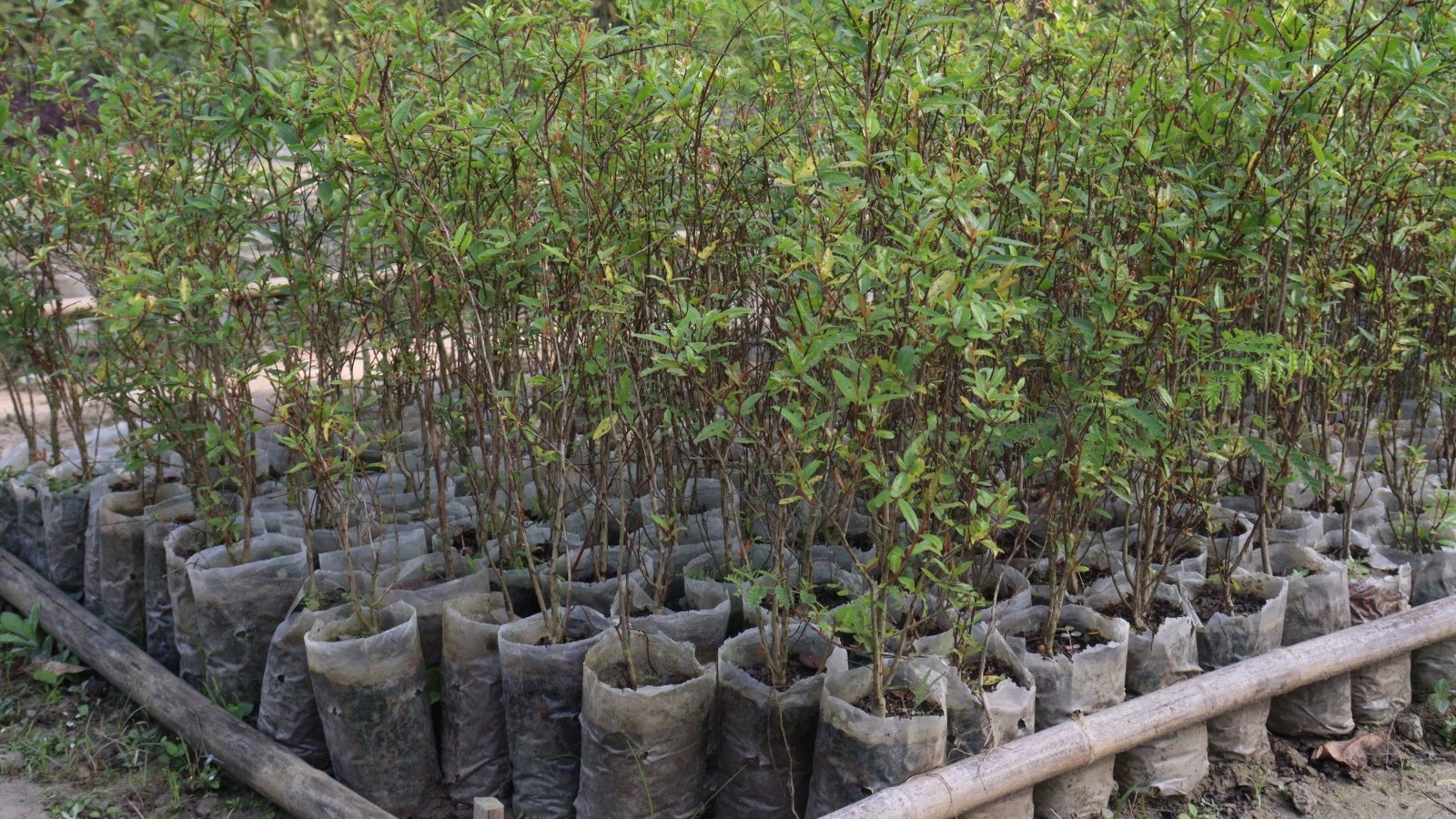
While there are many ways to propagate pomegranates, propagating from cuttings is the easiest way to ensure you get an exact clone of your ‘Wonderful’ variety. Typically grown from hardwood cuttings, new plants are genetically identical to the original tree, ensuring the same fruits.
The best time to take cuttings for propagation is in late winter before the new growth begins. Select healthy, mature branches from the previous year’s growth about 8 to 10 inches long. Avoid thin and spindly branches, choosing the healthiest cuttings for a higher chance of success.
The cut should be made just below a node, where the leaf attaches to the stem. Remove the lower leaves and dip the cut end into rooting hormone to stimulate root growth. Plant in a well-draining potting mix.
Root development can take several weeks, so don’t panic if you don’t notice any new growth straight away. Keep the soil lightly moist to create the right environment for root growth. Once the cuttings have rooted, transplant into individual pots or directly into the garden.
Common Problems
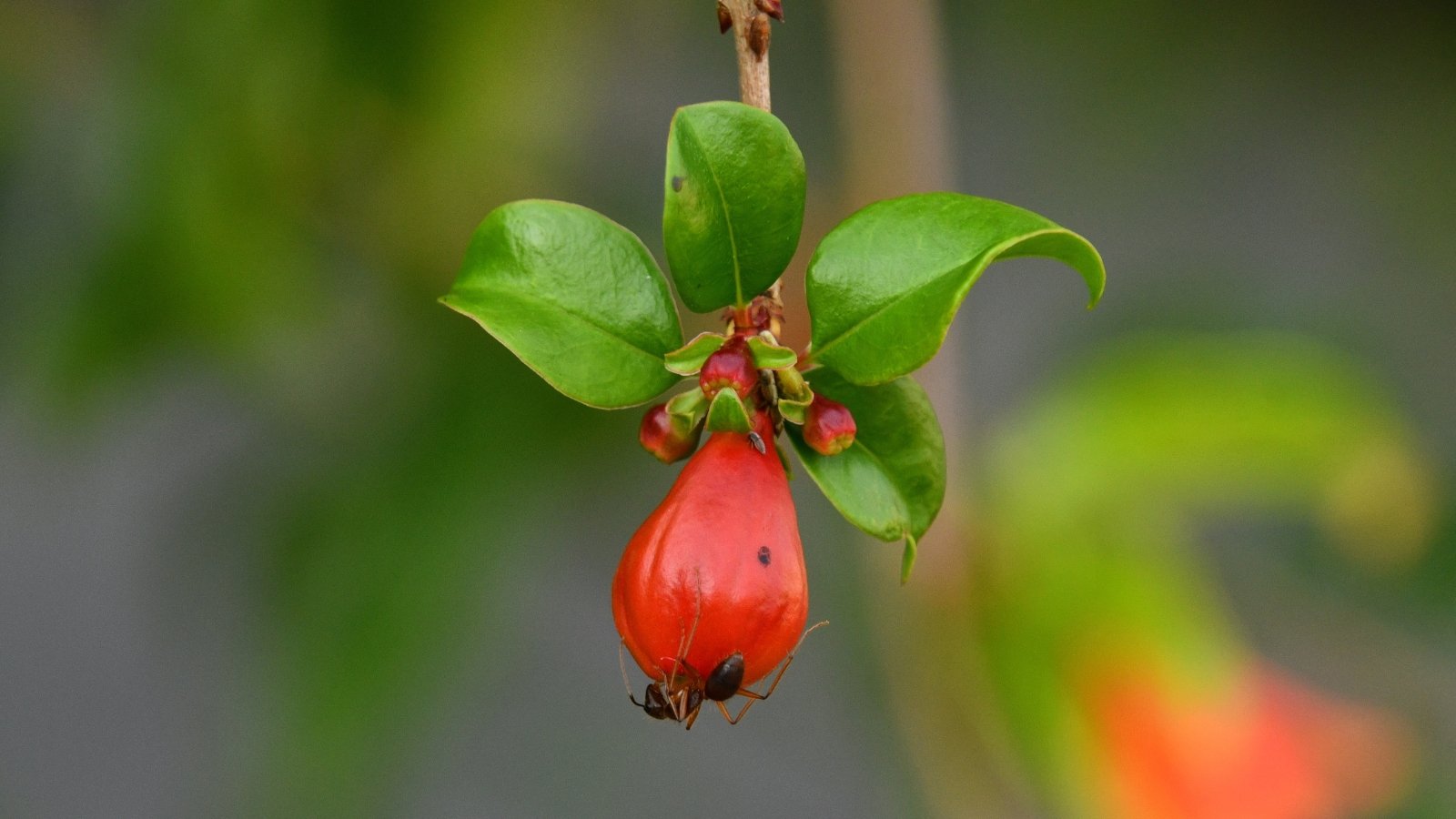
Although pomegranates are tough plants, being aware of common problems and knowing how to address them can help preserve your harvest in cases where issues do pop up.
Pomegranates are susceptible to a few common garden pests, like aphids, that like to feed on new growth, weakening the plant. Regular monitoring of your trees and avoiding stress will help keep pests at bay.
Fungal diseases are also a potential concern, especially in humid environments or periods of consistent rain. If signs of fungal disease appear, remove the affected areas and consider applying a fungicide to prevent further spread.
One of the more troubling issues is when the fruits crack open before they’re ready to be harvested. This problem is usually caused by sudden changes in soil moisture, especially after a period of drought followed by heavy watering or rainfall. Plant in well-draining soil and watch your watering during ripening time to prevent problems.
Final Thoughts
A tough tree with few problems and delicious fruits, it’s easy to see why the ‘Wonderful’ pomegranate is so popular and, excuse the pun, wonderful.



